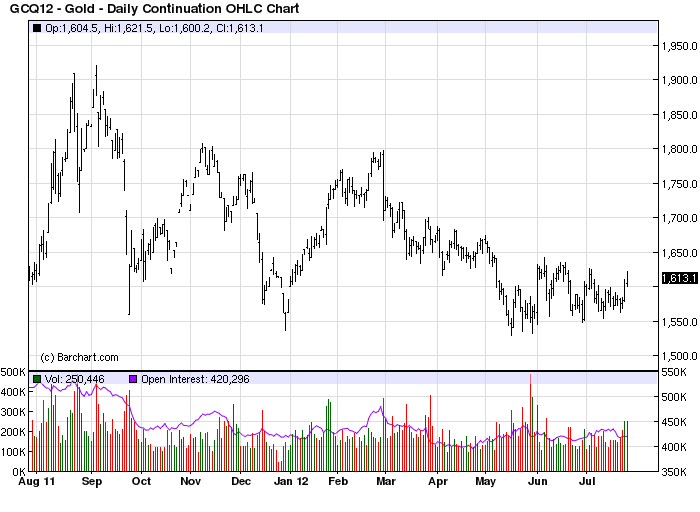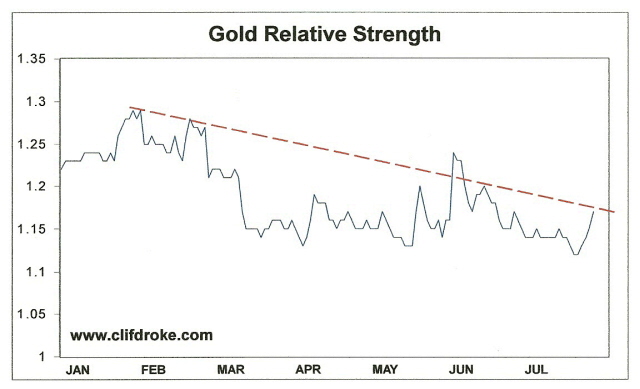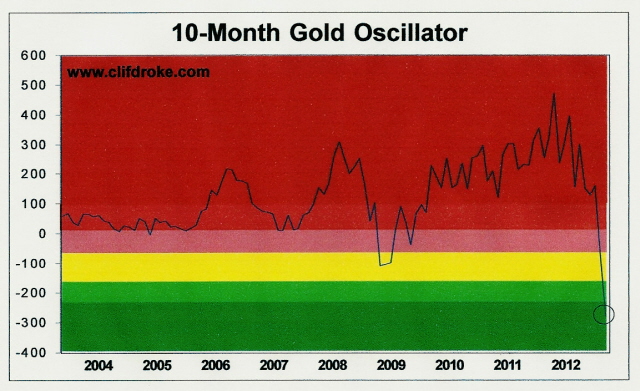Gold’s historic run-up from $250 to nearly $2,000 an ounce in the last 10 years has underlined the long-term value and intrinsic worth of a key asset. It has also provided a fabulous, once-in-a-lifetime investment opportunity for many individuals, not to mention a long-term momentum trade for both retail and institutional investors.
Gold has also provided investors with an important lesson in the past year: despite its distinctive safe haven value, the metal definitely has a speculative element which is critical to its price appreciation. In this regard at least, gold is no different than other assets. Gold’s speculative element was nowhere more evident than in the series of margin requirement hikes last summer, which saw gold fall from an all-time high of just under $2,000 an ounce to a low of around $1,550.
From the bottom of the 2008 credit crisis, gold benefited from a combination of bullish factors. At the bottom of the crisis in late 2008 – and well before the smoke finally cleared from the financial market in March 2009 – gold got the benefit of relative strength versus the equity market. Hedge funds and institutional traders are constantly on the lookout for markets and investment opportunities that are outperforming the general equities market. Compared to the benchmark S&P 500, gold was a shining example of relative strength and it quickly caught the eye of big money traders in the latter part of 2008. Gold was really the ultimate relative strength play in the early stages of the 2009-2011 global recovery.
Aside from relative strength and valuation considerations, gold also benefited from successive quantitative easing initiatives undertaken by the Federal Reserve between 2009 and 2011. The gold market was a huge recipient of “hot money” inflows owing to the excessive liquidity generated by QE1 and QE2, and these programs helped propel gold to all-time highs.
Fast forward to the summer of 2012 and we find gold the opposite of the technical position it was in during the 2009-2011 period. It no longer had the benefit of relative strength and the residual effects of QE2 have long since faded. Worse still (from an intermediate-term perspective), gold doesn’t even have the benefit of the leveraged, speculative traders prior to the CME Group’s margin hikes last summer. Gold has been forced to undergo a long period of quiet consolidation as the trend trading crowd seeks opportunities in other markets.
What will change this situation and generate the return of the speculative element so critical for gold’s success? One of two possibilities can be mentioned for the foreseeable interim outlook. The first possibility is the one being widely discussed by investors today, namely a third quantitative easing program (QE3). This is the least likely of the possibilities as far as fueling a near term gold breakout. A third QE program during an election year would be politically toxic and too controversial to be considered (barring a massive deterioration in the global economy and financial market between now and November). Moreover, Fed Chairman Bernanke isn’t likely to prime the liquidity pump anytime soon given the relatively high levels of prices for both equities and consumer prices.
The second possibility for a gold turnaround is the one most likely by year end. A conspicuous increase in gold’s relative strength would do much to attract the attention of market-moving hedge funds and institutional investors. This could easily be accomplished even if gold doesn’t break out from its consolidation pattern anytime soon. Indeed, gold need only remain within its lateral trading range of the past few months during an equity market decline after the 4-year cycle peak this fall. This is essentially what happened in the latter part of 2008, which was the previous 4-year cycle peak. The fourth quarter of 2008 also provided gold with its opportunity to shine vis-à-vis equities, which could easily be repeated in Q4 2012. 
If history repeats, by this fall, gold will be poised to benefit from both a relative strength increase as well as an historic long-term “oversold” signal (see chart below).
There are several prominent trouble spots in the global economy which could easily metastasize and reach crisis proportions by 2013. I’m referring to the European debt problem, China’s economic slowdown, and the coming U.S. tax increases of 2013-2014. Gold will once again resume its traditional safe haven role once the concern over these problems reaches the boiling point and morphs into full-fledged fear.
The two points along the 60-year economic cycle in which gold ownership is most desirable is during the peak phase of the cycle when runaway inflation reaches its apogee, and the trough of the cycle when extreme deflation is at its worse. We are about to arrive at the latter end of the cycle when the deflationary undercurrents which have damaged the economy in recent years will accelerate and become uncontainable. It’s in just such a ravaging environment that gold will truly shine.
- English (UK)
- English (India)
- English (Canada)
- English (Australia)
- English (South Africa)
- English (Philippines)
- English (Nigeria)
- Deutsch
- Español (España)
- Español (México)
- Français
- Italiano
- Nederlands
- Português (Portugal)
- Polski
- Português (Brasil)
- Русский
- Türkçe
- العربية
- Ελληνικά
- Svenska
- Suomi
- עברית
- 日本語
- 한국어
- 简体中文
- 繁體中文
- Bahasa Indonesia
- Bahasa Melayu
- ไทย
- Tiếng Việt
- हिंदी
Two Keys For The Next Gold Breakout
Published 07/29/2012, 04:50 AM
Updated 07/09/2023, 06:31 AM
Two Keys For The Next Gold Breakout
3rd party Ad. Not an offer or recommendation by Investing.com. See disclosure here or
remove ads
.
Latest comments
Install Our App
Risk Disclosure: Trading in financial instruments and/or cryptocurrencies involves high risks including the risk of losing some, or all, of your investment amount, and may not be suitable for all investors. Prices of cryptocurrencies are extremely volatile and may be affected by external factors such as financial, regulatory or political events. Trading on margin increases the financial risks.
Before deciding to trade in financial instrument or cryptocurrencies you should be fully informed of the risks and costs associated with trading the financial markets, carefully consider your investment objectives, level of experience, and risk appetite, and seek professional advice where needed.
Fusion Media would like to remind you that the data contained in this website is not necessarily real-time nor accurate. The data and prices on the website are not necessarily provided by any market or exchange, but may be provided by market makers, and so prices may not be accurate and may differ from the actual price at any given market, meaning prices are indicative and not appropriate for trading purposes. Fusion Media and any provider of the data contained in this website will not accept liability for any loss or damage as a result of your trading, or your reliance on the information contained within this website.
It is prohibited to use, store, reproduce, display, modify, transmit or distribute the data contained in this website without the explicit prior written permission of Fusion Media and/or the data provider. All intellectual property rights are reserved by the providers and/or the exchange providing the data contained in this website.
Fusion Media may be compensated by the advertisers that appear on the website, based on your interaction with the advertisements or advertisers.
Before deciding to trade in financial instrument or cryptocurrencies you should be fully informed of the risks and costs associated with trading the financial markets, carefully consider your investment objectives, level of experience, and risk appetite, and seek professional advice where needed.
Fusion Media would like to remind you that the data contained in this website is not necessarily real-time nor accurate. The data and prices on the website are not necessarily provided by any market or exchange, but may be provided by market makers, and so prices may not be accurate and may differ from the actual price at any given market, meaning prices are indicative and not appropriate for trading purposes. Fusion Media and any provider of the data contained in this website will not accept liability for any loss or damage as a result of your trading, or your reliance on the information contained within this website.
It is prohibited to use, store, reproduce, display, modify, transmit or distribute the data contained in this website without the explicit prior written permission of Fusion Media and/or the data provider. All intellectual property rights are reserved by the providers and/or the exchange providing the data contained in this website.
Fusion Media may be compensated by the advertisers that appear on the website, based on your interaction with the advertisements or advertisers.
© 2007-2024 - Fusion Media Limited. All Rights Reserved.
